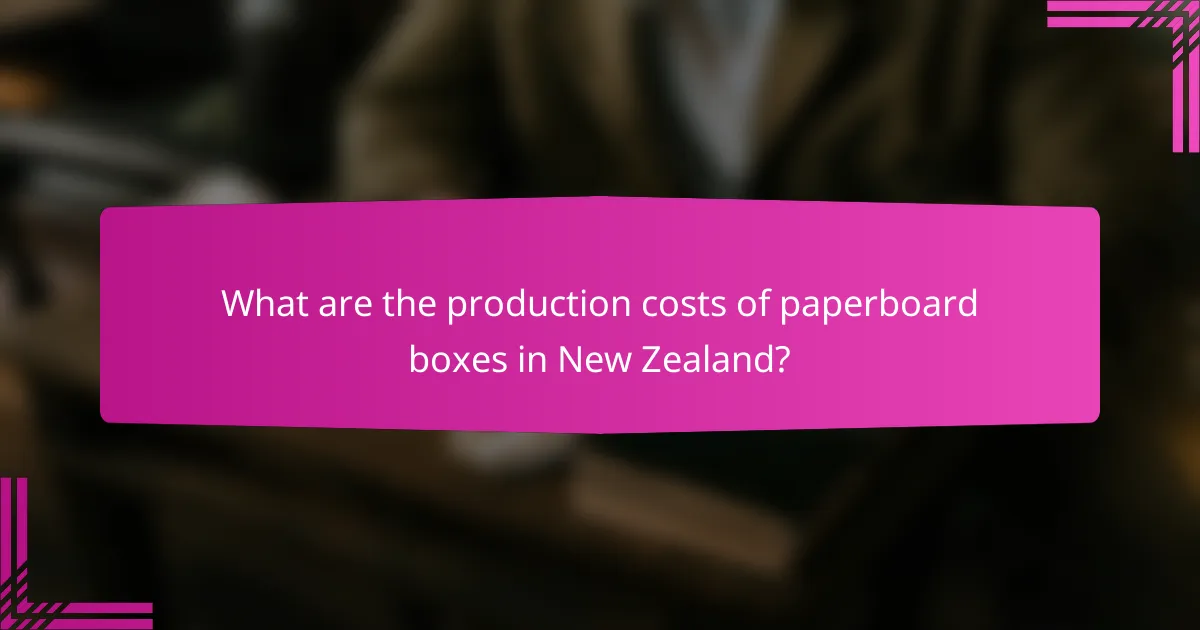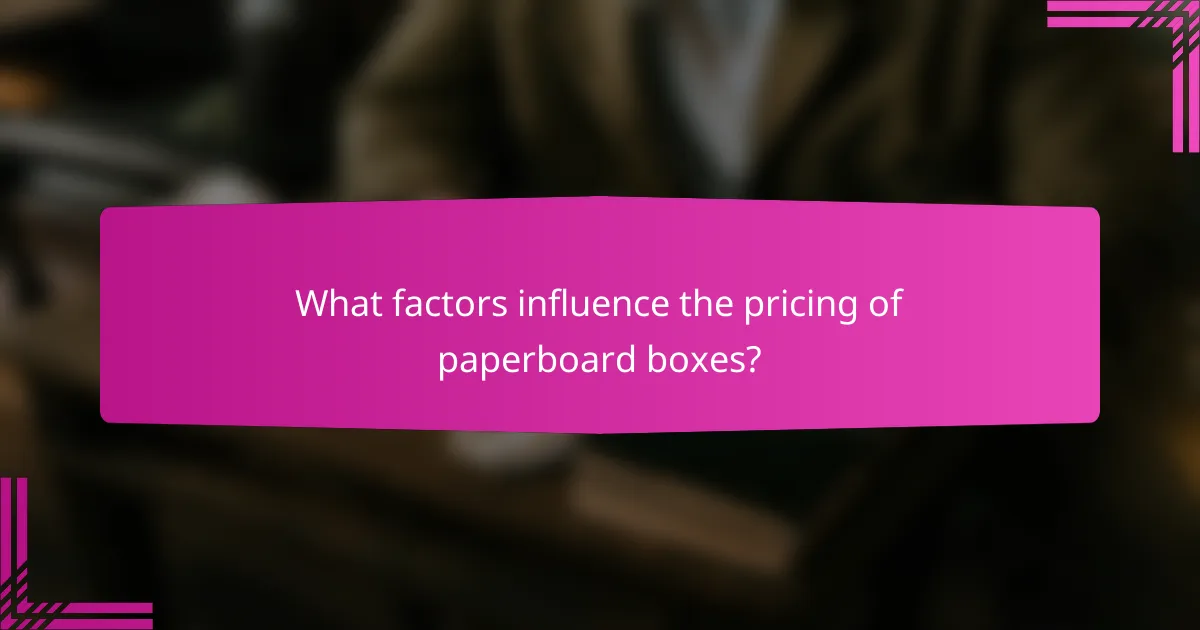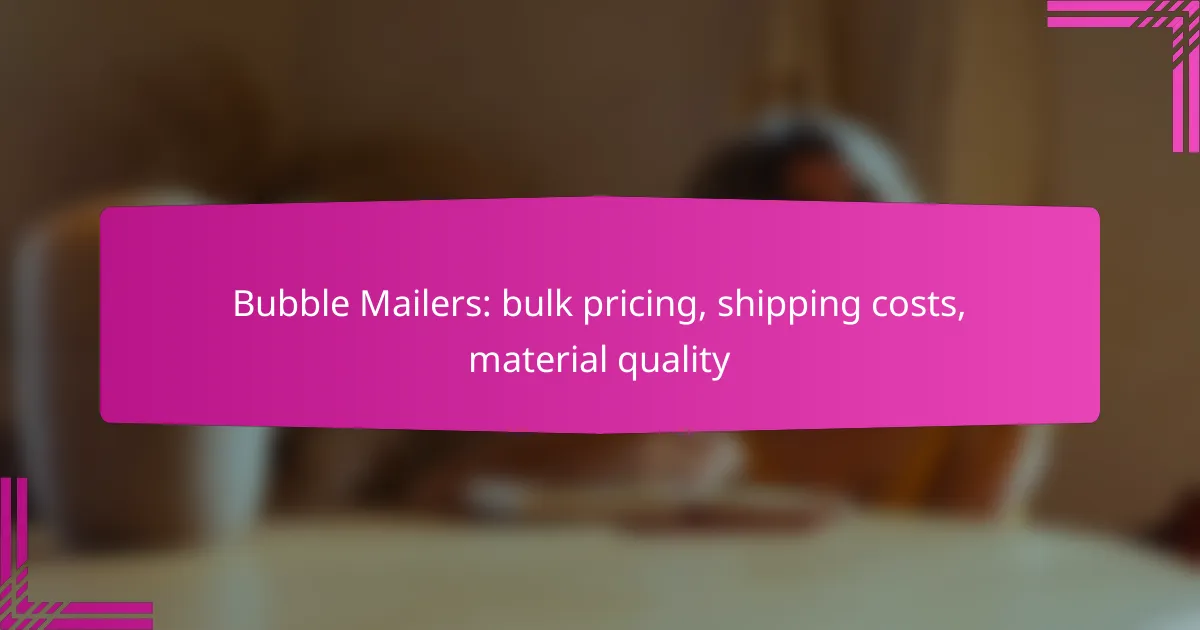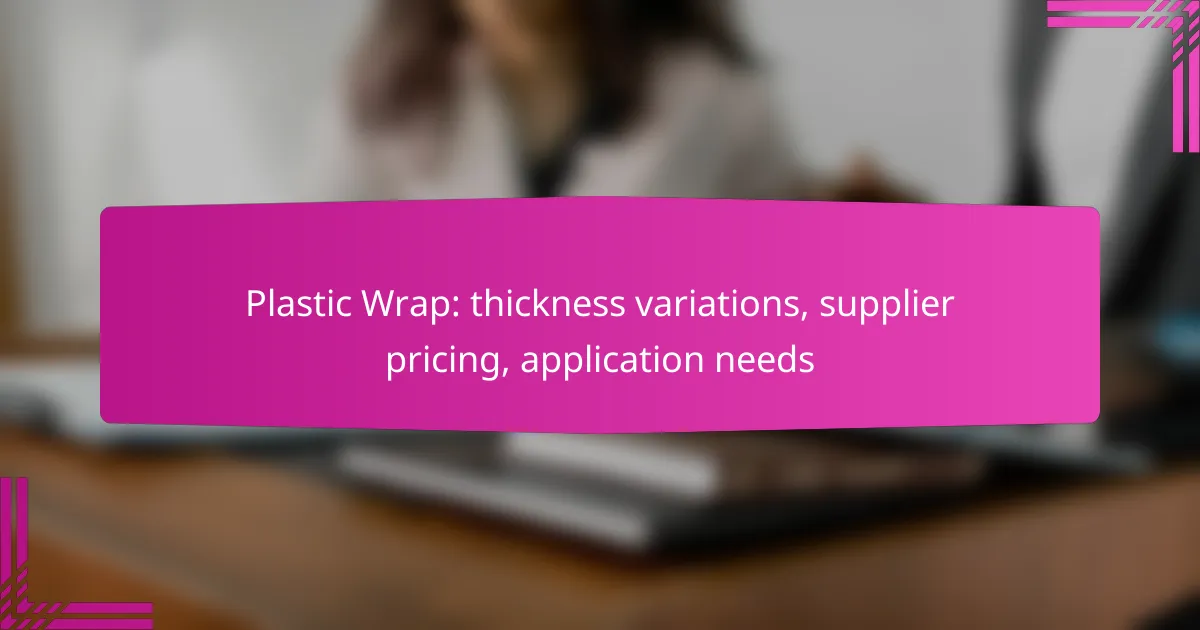Understanding the production costs of paperboard boxes is essential for businesses looking to optimize their packaging processes in New Zealand. Customization options allow for tailored designs that enhance branding while considering both functionality and environmental impact. Additionally, purchasing in bulk can lead to significant savings, as per-unit costs decrease with larger order sizes, making it a practical choice for various packaging needs.

What are the production costs of paperboard boxes in New Zealand?
The production costs of paperboard boxes in New Zealand vary based on several factors, including materials, labor, equipment, and logistics. Understanding these components can help businesses estimate expenses and optimize their production processes.
Material costs
Material costs for paperboard boxes typically account for a significant portion of the overall production expenses. In New Zealand, the price of paperboard can fluctuate based on market demand and availability, generally ranging from NZD 1 to NZD 3 per kilogram. Choosing recycled paperboard may offer cost savings while also appealing to environmentally conscious consumers.
When selecting materials, consider the type of paperboard, such as corrugated or solid board, as each has different cost implications and suitability for various applications.
Labor costs
Labor costs in New Zealand can vary depending on the skill level required and the complexity of the production process. On average, hourly wages for workers in the packaging industry range from NZD 20 to NZD 30. Efficient training and streamlined processes can help reduce labor costs while maintaining quality.
It’s essential to factor in the potential for overtime and the need for skilled labor, especially for specialized tasks such as printing or intricate designs.
Equipment costs
Investing in equipment for producing paperboard boxes can be a significant upfront cost. Basic machinery, such as die-cutters and folding machines, can range from NZD 10,000 to NZD 100,000 depending on capacity and features. Regular maintenance and potential upgrades should also be considered in the overall equipment costs.
Leasing equipment may be an option for smaller businesses looking to minimize initial expenditures while still accessing modern technology.
Shipping and logistics
Shipping and logistics costs are crucial in the overall production cost of paperboard boxes. In New Zealand, transportation expenses can vary based on distance, weight, and mode of transport, typically ranging from NZD 100 to NZD 500 for bulk shipments. Efficient logistics planning can help reduce these costs significantly.
Consider partnering with local suppliers to minimize shipping distances and costs, and explore options for bulk shipping to take advantage of lower rates.
Economies of scale
Economies of scale play a vital role in reducing production costs for paperboard boxes. As production volume increases, the per-unit cost generally decreases due to fixed costs being spread over a larger number of units. Businesses can achieve significant savings by ordering materials in bulk and optimizing production runs.
However, it’s important to balance the benefits of increased production with market demand to avoid overproduction and excess inventory costs.

How can I customize paperboard boxes?
Customizing paperboard boxes involves selecting various features to meet specific needs, including design, size, and materials. Businesses can tailor these boxes to enhance branding and functionality while considering production costs and environmental impact.
Printing options
Printing options for paperboard boxes include flexographic, digital, and offset printing. Flexographic printing is cost-effective for large runs, while digital printing offers flexibility for smaller batches with intricate designs. Consider the type of ink used as well, with eco-friendly inks becoming increasingly popular.
Size and shape variations
Paperboard boxes can be customized in various sizes and shapes to accommodate different products. Common shapes include regular slotted containers (RSC), die-cut boxes, and mailer boxes. When selecting dimensions, ensure the box fits the product snugly to minimize movement during shipping.
Finishing techniques
Finishing techniques enhance the appearance and durability of paperboard boxes. Options include gloss or matte lamination, embossing, and spot UV coating. Each technique can significantly impact the box’s visual appeal and tactile experience, so choose based on your branding goals.
Eco-friendly materials
Using eco-friendly materials in paperboard box production is increasingly important for sustainability. Options include recycled paperboard and biodegradable coatings. When selecting materials, verify certifications like FSC (Forest Stewardship Council) to ensure responsible sourcing and production practices.

What are the bulk rates for paperboard boxes?
Bulk rates for paperboard boxes typically offer significant discounts based on order size, with prices decreasing as quantities increase. Businesses can expect lower per-unit costs when purchasing larger volumes, making it a cost-effective option for packaging needs.
Discount structures
Discount structures for paperboard boxes often follow a tiered pricing model. For instance, orders of 500 to 1,000 boxes might receive a 10% discount, while orders exceeding 5,000 could see discounts of 20% or more. It’s essential to compare these structures among suppliers to maximize savings.
Some suppliers may also offer seasonal promotions or loyalty discounts, so inquire about any available offers that could further reduce costs.
Minimum order quantities
Minimum order quantities (MOQs) for paperboard boxes can vary significantly between suppliers. Common MOQs range from 100 to 1,000 boxes, depending on the customization options and materials used. Smaller businesses should look for suppliers with flexible MOQs to avoid excess inventory.
Be aware that exceeding the MOQ often leads to better pricing, so consider your projected needs to balance cost and inventory levels effectively.
Supplier comparisons
When comparing suppliers for paperboard boxes, evaluate their pricing, MOQs, and customization options. Some suppliers may provide better rates for larger orders, while others might excel in offering unique designs or faster turnaround times.
Request quotes from multiple suppliers to assess their bulk rates and terms. This can help identify the best overall value, factoring in shipping costs and lead times along with the base price.

What factors influence the pricing of paperboard boxes?
The pricing of paperboard boxes is influenced by several key factors, including market demand, material availability, and production technology. Understanding these elements can help businesses make informed decisions regarding their packaging costs.
Market demand
Market demand plays a crucial role in determining the pricing of paperboard boxes. When demand is high, prices tend to increase due to limited supply and increased competition among buyers. Conversely, during periods of low demand, prices may decrease as manufacturers seek to move inventory.
Seasonal trends can also affect demand. For instance, certain industries, like retail, may experience spikes in demand during holidays, leading to higher prices. Businesses should consider these fluctuations when planning their purchasing strategies.
Material availability
The availability of raw materials significantly impacts the cost of producing paperboard boxes. Fluctuations in the supply of paper pulp, for example, can lead to price changes. If sourcing materials becomes more challenging, manufacturers may pass those costs onto consumers.
Additionally, sustainability trends are influencing material choices. Companies that prioritize eco-friendly materials may face higher costs, but this can also appeal to environmentally conscious consumers, potentially justifying the price increase.
Production technology
Advancements in production technology can lower costs by increasing efficiency and reducing waste. Automated processes and modern machinery can streamline production, resulting in lower prices for consumers. However, the initial investment in such technology can be substantial.
On the other hand, older production methods may incur higher labor costs and longer lead times, which can drive up the price of paperboard boxes. Businesses should evaluate their production capabilities and consider investing in technology to remain competitive in pricing.

What are the benefits of using paperboard boxes?
Paperboard boxes offer a range of benefits, including lightweight protection, cost-effectiveness, and eco-friendliness. They are versatile for various applications, making them a popular choice for packaging in many industries.
Production costs
The production costs of paperboard boxes can vary based on materials, design complexity, and manufacturing processes. Generally, they are more affordable than plastic or metal alternatives, especially for bulk orders. Factors such as the type of paperboard used and printing requirements can influence overall expenses.
For businesses, it’s essential to consider both fixed and variable costs. Fixed costs include machinery and setup, while variable costs depend on the quantity produced. Bulk orders often lead to lower per-unit costs, making them a smart choice for companies looking to save.
Customization options
Customization options for paperboard boxes are extensive, allowing businesses to tailor packaging to their specific needs. Options include size, shape, color, and printing designs. Custom features like die-cut windows or unique closures can enhance product visibility and appeal.
When considering customization, think about your brand identity and target audience. Simple designs may suffice for some products, while others may benefit from intricate artwork or special finishes. Always balance aesthetics with functionality to ensure the packaging protects the product effectively.
Bulk rates
Bulk rates for paperboard boxes can significantly reduce costs, making them an attractive option for businesses with high-volume needs. Many manufacturers offer tiered pricing, where the unit price decreases as the order quantity increases. This can lead to substantial savings over time.
When negotiating bulk rates, it’s beneficial to compare offers from multiple suppliers. Look for additional perks such as free shipping or design services, which can further enhance value. Always factor in lead times and minimum order quantities to ensure your supply chain remains efficient.



